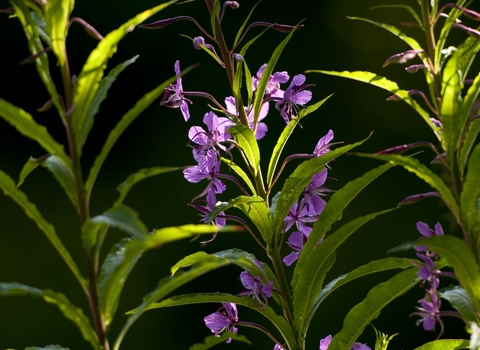Rosebay willowherb © Philip Precey

©Ross Hoddinott/2020VISION
Rosebay willowherb
A tall plant, Rosebay willowherb is a successful coloniser; it can form dense stands of bright pink flower spikes on disturbed ground, such as woodland clearings, verges and waste ground.
